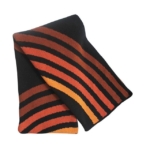News
December 9, 2020
Imports remain strong after setting new records this holiday season
Imports remain strong after setting new records this fall as retailers stocked up both stores and warehouses for the holiday season and met new demands for quick delivery of online orders, according to the monthly Global Port Tracker report released today by the National Retail Federation (NRF) and Hackett Associates.
“The pandemic has made the past year one of the most trying the supply chain has ever seen, but retailers have met that challenge,” Jonathan Gold, vice president for supply chain and customs policy for NRF said. “We’ve gone from not knowing whether we would be able to get merchandise from China to having a surplus of goods when stores were closed to having to meet pent-up demand as consumers returned. At this point, retailers have seen a successful holiday season so far and goods are reaching the shelves. We hope 2020 is a one-time experience, but we’ve learned a lot.”
Hackett Associates Founder Ben Hackett said the retail inventory-to-sales ratio soared to 1.68 in April, when most stores were closed, then plummeted more than 25% to 1.22 in June and has remained at about that level since then. That drove record imports as retailers both replenished inventories and prepared for the holidays.
“With inventories low but demand growing, we have witnessed a surge in imports as retailers try to keep up,” Hackett said. “The dramatic shift to online shopping coupled with the expectation of next-day delivery is also spurring the growth of imports at warehouses for major online sellers, who need to have enough stock on hand not just to meet demand but to meet it instantly.”
U.S. ports covered by Global Port Tracker handled 2.21 million Twenty-Foot Equivalent Units (TEU) in October, the latest month for which final numbers are available. That was up 17.6% year-over-year and up 5.2% from 2.11 million TEU in September, the previous record for a single month since NRF began tracking imports in 2002. September, in turn, had edged out 2.1 million TEU in August, which had broken the previous record of 2.04 million TEU set in October 2018. A TEU is one 20-foot container or its equivalent.
October’s number brought the total for the “peak season” – the period from July through October when retailers rush to bring in merchandise for the winter holidays each year – to 8.3 million TEU. That was an increase of 8.8% over the same time last year and beat the previous record of 7.7 million TEU set in 2018.
Even with most holiday merchandise already in the country, November imports remained strong at an estimated 2.07 million – a 22.4% jump year-over-year and the fourth-busiest month on record. December is forecast at 1.91 million TEU, up 11% from last year.
As recently as a month ago, 2020 was expected to total 20.9 million TEU, a drop of 3.4% from last year and the lowest annual total since 20.5 million TEU in 2017 because of low imports earlier this year. But with the recent string of record months, 2020 is expected to come in at 21.8 million TEU, up 0.8% over 2019. That would tie 2018 as the busiest year on record.
January 2021 is forecast at 1.86 million TEU, up 2.4% from January 2020; February at 1.55 million TEU, up 2.6% year-over-year; March at 1.62 million TEU, up 17.8% from March 2020 – when factories in China failed to reopen after the Lunar New Year holiday – and April at 1.74 million TEU, up 8.3% year-over-year.
With retail sales rebounding strongly due to continued consumer resilience, NRF has forecast that holiday sales during November and December will increase between 3.6% and 5.2% over 2019 to a total between $755.3 billion and $766.7 billion.



















